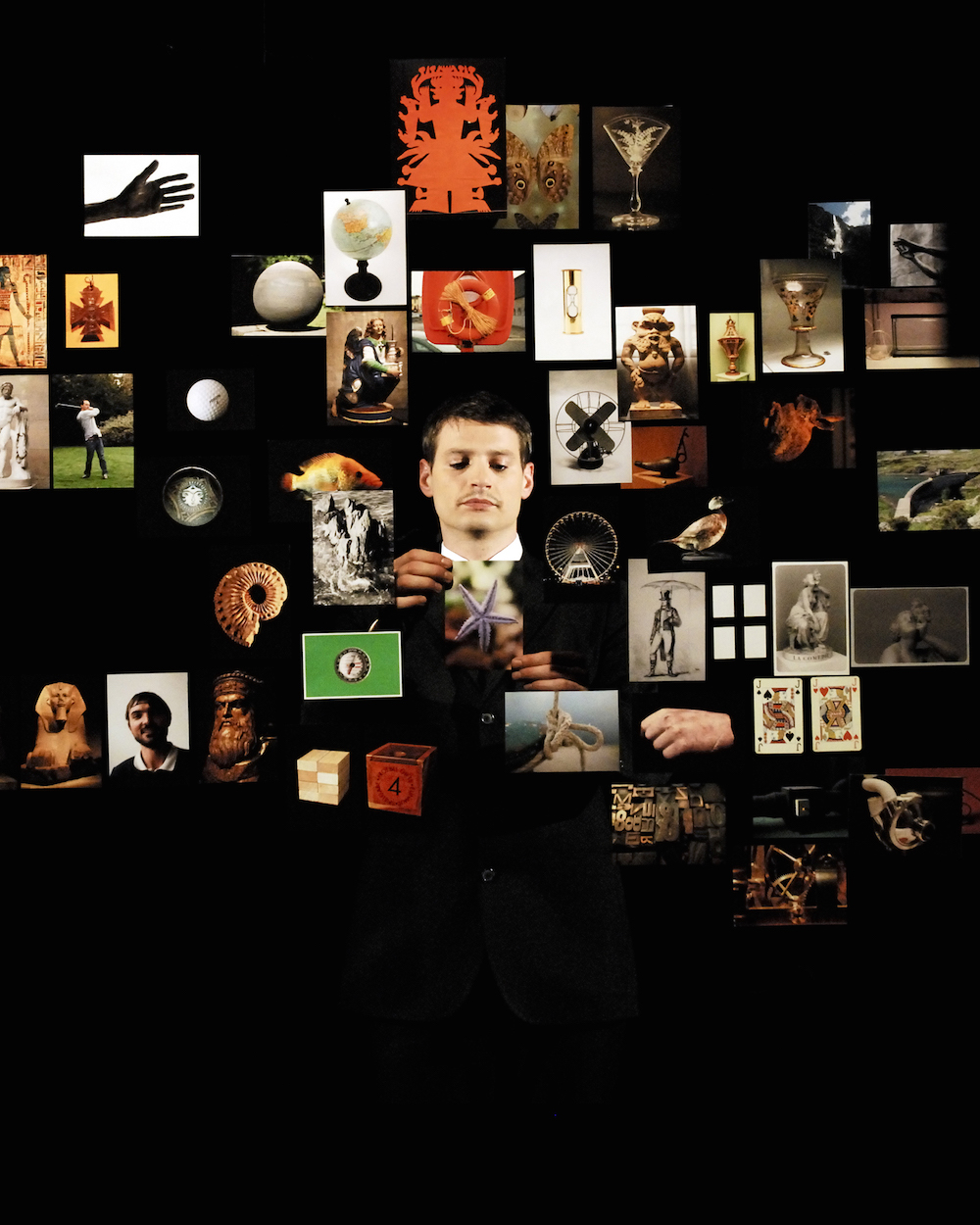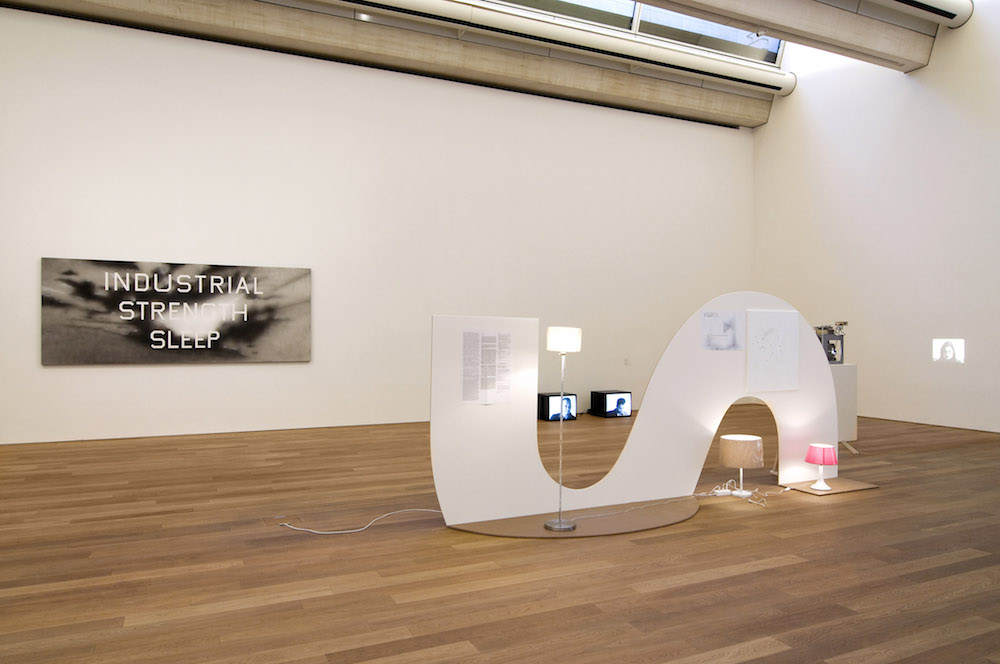The Space of Words
MUDAM, Luxembourg
MUDAM, Luxembourg

A show entitled ‘The Space of Words’ and based on the eponymous 2004 lecture by Jacques Rancière could easily have been an academic exercise. But, refreshingly, this carefully constructed exhibition had no thesis. Rather, it was a reflection on how words used in the service of art can both construct and dismantle an art work’s meaning. Curator Christophe Gallois selected multiple works by 11 artists that deal with the uses and effacement of language in art, as well as its arbitrariness and inadequacy: language as a system in art can be used to make sense or nonsense, but both uses can be productive.
Marcel Broodthaers’ work Un Coup de dés jamais n’abolira le hazard (The Roll of the Dice Does Not Eliminate Chance, 1969) was the exhibition’s apt starting point. In this work, Broodthaers etched Stéphane Mallarmé’s poem of the same name on aluminium plates and then concealed each word with a thick black band, in a gesture of both homage and iconoclasm. From here, the show could have followed a potentially pretentious path, focusing on austere, monochromatic works that efface language in favour of silence or blankness. But Gallois pursued a less rigid version of this thinking, following up Broodthaers’ work with Ed Ruscha’s Trouble Your Way IF YOU Insist on Ratting (1997), which similarly blots out the words of his own ‘word painting’. From here on, Gallois’ inclusions fruitfully bypassed the more obvious text-based Conceptual tradition, and instead introduced its ancestors, which include more maximal, even architectural Conceptual efforts.
One example was Tris Vonna-Michell’s manic project Leipzig Calendar Works (2009), which combines two storylines from previous works, one of which concerns detectives trying to piece together shredded Stasi documents. The way these torn paper strips render the information on them illegible echoes the mute bands in Broodthaers’ and Ruscha’s works, while delicate quail eggs displayed in a vitrine (a remnant of another plotline about his search for the poet Henri Chopin whose favourite food was quail eggs) call to mind Broodthaers’ displays in his Department of Eagles (1968). Vonna-Michell’s loquacious, multi-media accounts of his rambling adventures do not provide any more answers than silence or the absence of words.
The art works that faltered were those that translated or relied on linguistic theories too literally. Aurélien Froment’s clever, punning arrangement of books of philosophy and literature in De I’Île à hélice à Ellis Island (2005) exemplifies a common syndrome among a younger generation of contemporary artists – that the theories being taught in art schools are still resting on the surface, not yet fully absorbed, and the result feels studious and cramped. But Froment also had one of the best works in the show, the video Théâtre de poche (Pocket Theatre, 2007), in which a magician arranges iconic images from art history on an invisible wall in front of him, the way a poet might intuitively arrange words.

Dominique Petitgand’s sound piece Le Bout de la langue (The Tip of the Tongue, 1994/2009) is an eloquent manifestation of the space of thought between words. One loudspeaker emits a French interview consisting of only the respondent’s hesitations, stops and starts. From the other speaker we hear an English translation of these breaks in thought with explanations like, ‘She thinks she remembers something, but she can’t quite remember what it was.’ The work was paired with Ryan Gander’s Felix Provides a Stage Again (2008) – two billboard-sized prints of his assistant going to complicated lengths to suspend a blank sheet of paper in mid-air.
This was also the first glimpse the show provided of the physical space of inspiration and creation – the artist’s studio. In his photos, Gander’s studio walls are covered with ideas for future works written in uniform block capitals: ‘Frosted porn mag covers’ or ‘Universe Collapsed Poster’. They uncannily echoed Ruscha’s word paintings nearby, such as High-Speed Gardening (1986–7). This was the kind of productive relationship that was sparked throughout the show: I even couldn’t help wondering if Ruscha’s Industrial Strength Sleep (1989) next to Manon de Boer’s soporific ‘portrait’ films might have been an unintended pun.
The concept of including multiple works by each artist was admirable, helping to keep the theme looser, although the weaker pieces were occasionally distracting. The regular recurrence of Broodthaers’ works anchored the entire show, revealing how much contemporary art is indebted to his approach to language, and that he is still the master of this particular domain. In his simple, short film La Pluie (projet pour un text) (The Rain, Project for a Text, 1969), we see the artist trying to write with an ink pen under a shower of water. It is the perfect metaphor for how it feels to try to write a text or create an art work, but it is also slapstick – brief and light yet full of doubt. Personally speaking, as a writer, this was just one of the ways the show demonstrated how literary and artistic inspiration can be borne from the same maddening frustration that comes from facing a blank page.
























